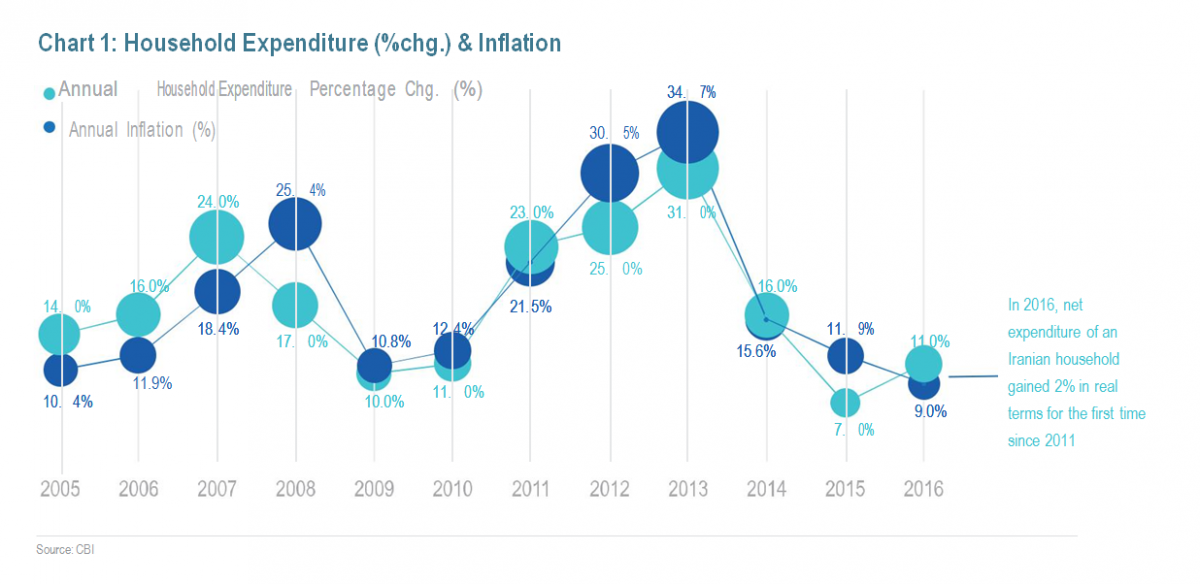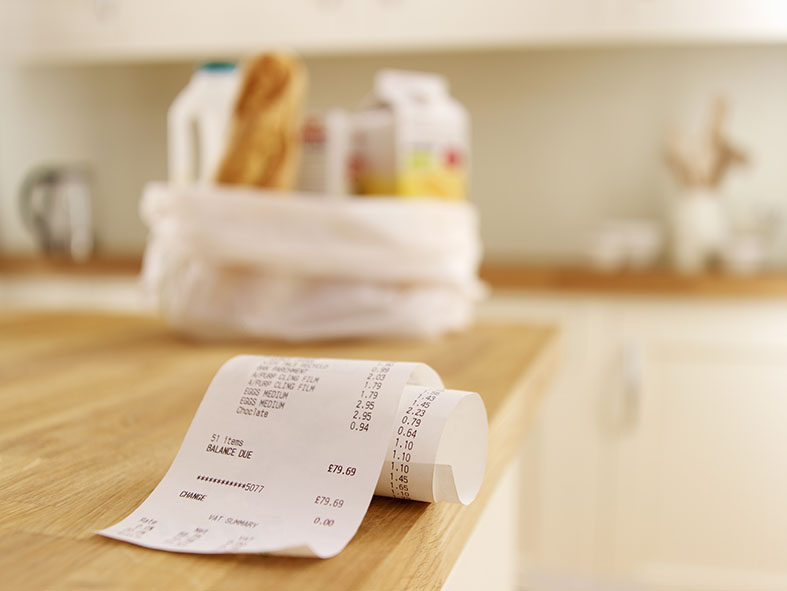The Central Bank of Iran’s recent publication included the Household Expenditure Survey for the fiscal 2016-17.
The annual survey is undertaken by CBI’s Department of Statistics by collecting information from Iranian households on their expenditure, income, savings, ownership of consumer durables, financial investments and assets.
According to the department, the survey is conducted with the latest updates from the United Nations System of National Accounts and is compatible with the UN Classification of Individual Consumption by Purpose. The report is known for its large coverage of households (17,543 households) in 79 cities across Iran and is published every year.
One of the notable trends in the 2016 HES report was the increase of net expenditure, in parallel with the rise in net income in Iranian households, after five years of continuous decline. The increase in spending behavior signals consumption is preferred over savings for the first time since 2011.

In addition, real GDP data from CBI showed an increase in private sector consumption value in real terms in the national accounts. These two trends: an increase in private sector consumption in real terms and an increase in households’ net expenditure in real terms are two signals suggesting a transition from recession to a gradual recovery of total demand in the Iranian economy.
According to analysts, a fall in inflation from 30% in 2012 to 10% has also been a key factor in empowering households to grow their purchasing power.
The report shows that in 2016, the net expenditure of an Iranian household in real terms gained 2% over the previous year. This is the second indicator of improving total demand in the economy after a 3.8% increase in private sector consumption in real terms in GDP.
Economists warn that this increase could be spent on imports, if prudent policies to empower local production and exporters are not pursued by the government.

One of the key improvements lies in the foreign exchange regime. A recent decision by CBI to discontinue a system whereby Iranians travelling abroad could buy up to $300 at subsidized rate is also viewed as a positive step toward exchange rate unification.
Chart 1 illustrates how household expenditure has changed versus annual inflation over the past 11 years.
According to the report, housing and utility expenses accounted for the bulk of household expenditure, with a share of 35.5%. Food and beverages were the second highest category with 23%, followed by transport expenses of 11%.
On the income side, the average income per household is reported to have totaled $860 per month and $10,320 on an annual basis, indicating annual growth of 11.3% in nominal and 2.3% in real terms (inflation adjusted).
Comparing household income and expenditure behavior, the growth of expenditure is in line with the growth of real income, which many analysts view as a positive sign of moving out of depressed demand in the economy.
According to the latest update from Masoud Nili, economic advisor to President Hassan Rouhani, the current production volume of manufacturing units (supply side) in the country is below their nominal capacity.
The increase in households’ real disposable income is a positive sign that shows Iranian households preferred to spend their additional inflation-adjusted income rather than saving it. It is also interesting to note that on average, 69% of household income come from salary and wages while 30% are from property rental income.
According to this sample survey, the average size of an Iranian household has continued to decline, falling to 3.33 members in 2016 from 3.38 a year earlier. In 2016, those between 31 and 50 years made up 31% of the total number of people surveyed, while 20% were below the age of 20.
In terms of employment status, one quarter of households had no employed member, while over half of households had only one employed member.


